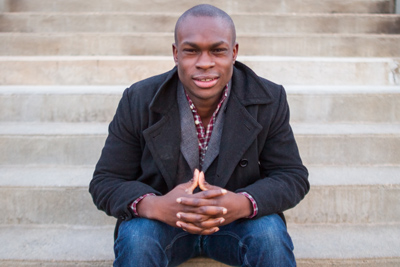December 5, 2014
By Madeline Ruoff ’18

Association of Amherst Students President Oluwatomi Williams ’16
Historically, it has been uncommon for the College’s student government to be led by a non-senior. 2014, however, marks one such year: The Association of Amherst Students (AAS) operated without a president from last May until this past October, when Oluwatomi Williams ’16, better known as Tomi, was elected president in a runoff election. Williams, only a junior, hopes to “rebrand” the AAS and better connect it with the student body.
The new AAS leader has seen two very different sides of Amherst culture as a member of both varsity soccer and Mock Trial teams. While he enjoyed both, he has since dropped them so that he can devote more time to his role as president. The activities, he says, showed him the need to unify campus, and he believes the best way to do so is to create a Senate that’s heavily involved in student life.
Williams says he campaigned for president “not because I was overly ambitious, but because I think I can make things better.” “I ran because I am a junior. I’ve been on every branch of the Amherst Senate and have seen so many good ideas that could never come through because the president only has a year. You can’t get enough done in that time.”
As president, Williams is determined to create a close relationship between the AAS and the Amherst student body. “Students need to get the realization that the AAS is listening and trying to accomplish what students want,” Williams says. “I’ve emailed as many faculty, administrators and student groups as possible to talk for half an hour, just to get ideas and change my perspective. The AAS can generate interest [in itself] by showing interest in others.”
He plans to hold three to four “whiteboard sessions” each semester that are open to the whole campus so that students can have their questions answered and share their ideas.
He also hopes to break down the divides that exist between Amherst students. “When you don’t see groups often, you create an image of what they are,” he says. “Students need more interaction on all sides of campus to see that people are more similar than you think. Students need to get out of their comforts zones.”
By narrowing the gap between the Senate and the student body, Williams believes that breaking down these divides is possible. In order to make sure “everyone feels at home,” he plans to hold more events that are open to all students, boost student representation on the Board of Trustees and initiate a mentoring program to connect new students with upperclassmen.
He again emphasizes that the AAS needs to connect with students. “I’m hoping students won’t have to do much to get their voices out. During election, candidates are knocking on everyone’s doors, but once elected, outreach stops, even though that’s when it’s really important.”